The 4 Knife Cuts Every Cook Should Know
Cooking without mastering these four basic knife strokes is like trying to run without knowing how to tie your shoes.
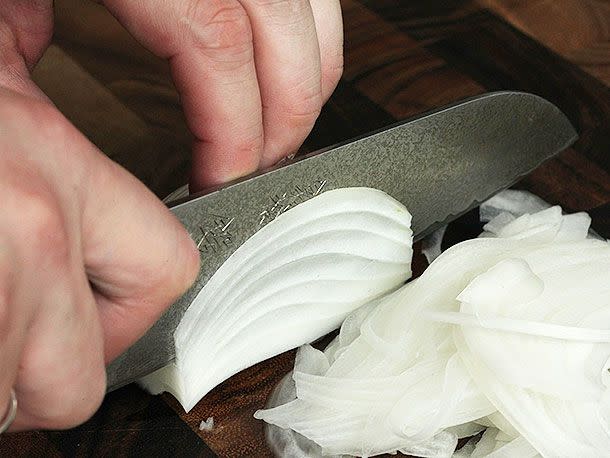
Serious Eats / J. Kenji López-Alt
Learning how to cut properly can make the difference between seeing kitchen work as a chore and a joy. It can mean the difference between unevenly cooked dishes and poor flavor development, and excellence. There's a good reason why the very first class any culinary student takes and the very first job any starting cook has in the kitchen is knife work. Cooking without mastering these basic strokes is like trying to run without knowing how to tie your shoes. These are the four strokes everybody should know.
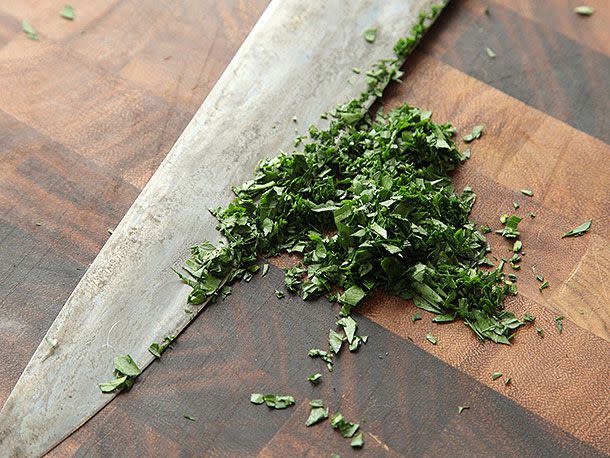
Serious Eats / J. Kenji López-Alt
Depending on the type of knife you use, you may find yourself using some more than others—slicing and the rock chop are used mostly with Western-style curved blades, while chopping and back-slicing are more common for straighter santoku-style knives—but all are good to have in your arsenal.
If you're a total beginner in the kitchen, you might want to take a quick look at our guide on how to properly hold a knife. In fact, if you don't know what a blade grip, a bolster, and the claw are, you may want a quick refresher anyway!
Cut #1: The Slice
What it's used for: Slicing large vegetables and meats, or rough-slicing herbs with a Western-style chef's knife.
How to do it: Create a flat, stable surface for your food to rest on by slicing it in half or slicing off a thin section of its face. Hold the food steady with your non-knife hand, curling your fingers into a claw and tucking your knuckles underneath.
Hold the tip of the blade against the cutting board with the knife angled upwards, the flat side resting against your knuckles.
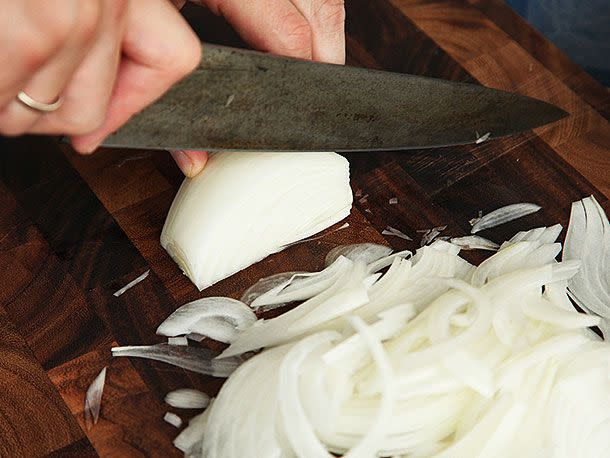
Serious Eats / J. Kenji López-Alt
With the tip of the blade in constant contact with the cutting board, pull the knife backwards slightly until the blade slices into the food.
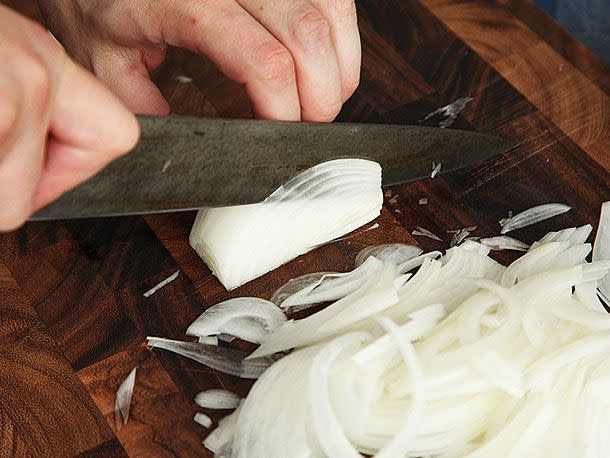
Serious Eats / J. Kenji López-Alt
Continue by pressing downwards and forwards, using the full length of the blade to slice through your food.
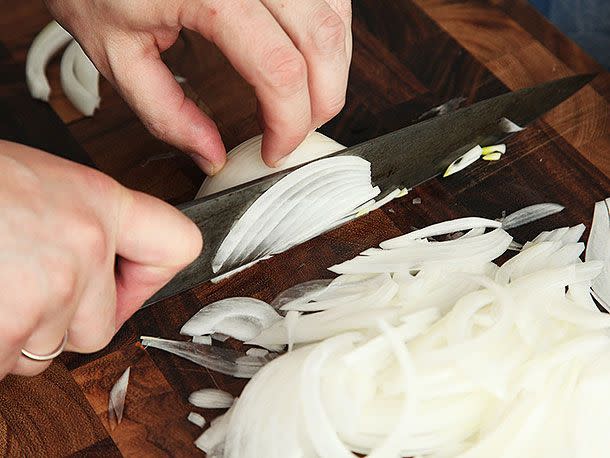
Serious Eats / J. Kenji López-Alt
Repeat, using a circular motion and keeping the blade tip against the board at all times.
Cut #2: The Chop
What it's used for: Precisions cutting of vegetables and herbs using a santoku-style knife. For all intents and purposes, this cut is interchangeable with the slice, it's just a matter of style and taste (I almost exclusively chop vs. slice). You will need a very sharp knife to effectively get the chop to work without cursing your food.
How to do it: Create a flat, stable surface for your food to rest on by slicing it in half or slicing off a thin section of its face. Hold the food steady with your non-knife hand, curling your fingers into a claw and tucking your knuckles underneath.
Hold the flat side of your knife blade against your knuckles, with the entire knife lifted above the cutting board.
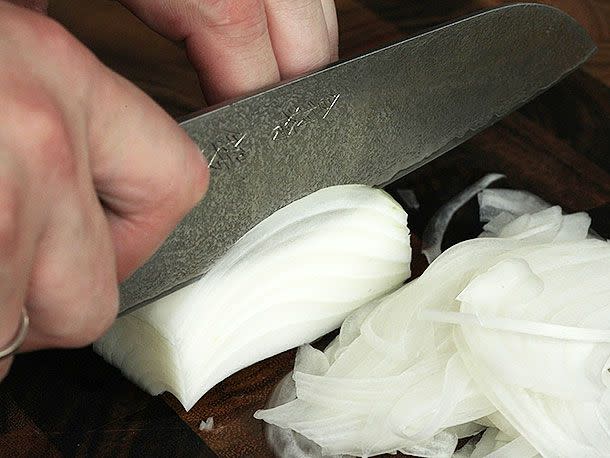
Serious Eats / J. Kenji López-Alt
Press downward in a smooth, even stroke, shifting the knife forward slightly as you go.
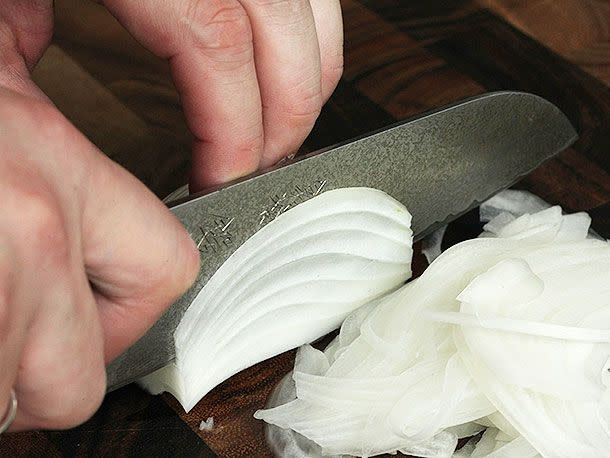
Serious Eats / J. Kenji López-Alt
Lift the blade back up and repeat.
Cut #3: The Back-Slice
What it's used for: Creating fine slices of small, delicate items such as herbs with minimal crushing, using wither a santoku or a Western-style chef's knife.
How to do it: If slicing herbs, stack the leaves and roll them up into a tight bundle. Hold the food steady with your non-knife hand, curling your fingers into a claw and tucking your knuckles underneath.
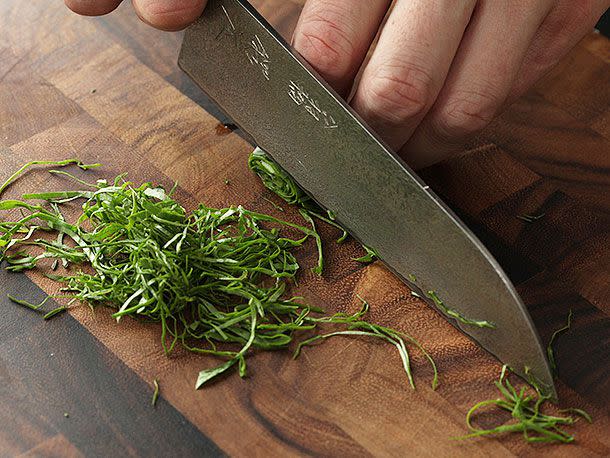
Serious Eats / J. Kenji López-Alt
Place the tip of the blade against the cutting board with the flat of the blade resting against your knuckles.
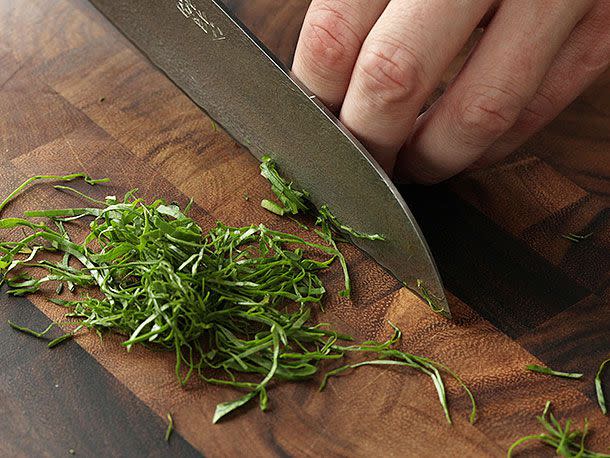
Serious Eats / J. Kenji López-Alt
Hold the knife at a very low angle and pull backwards steadily, using the entire length of the blade to slice through your food, with no downward motion at all.
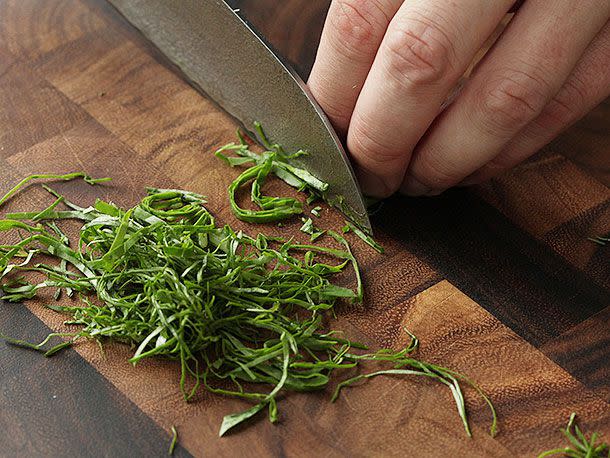
Serious Eats / J. Kenji López-Alt
Continue pulling backwards until the tip of your blade slices completely through the food.
Remember: NO DOWNWARD MOTION WHATSOEVER! The idea here is maximum horizontal motion (i.e. slicing) with minimal vertical motion (i.e. crushing).
Cut #4: The Rock Chop
What it's used for: Finely mincing fresh herbs, zest, or other aromatics.
How to do it: Roughly chop your ingredients using the slice or the chop, then gather it into a small pile. Place the tip of your knife on one side of the pile and hold it steady with your free hand.
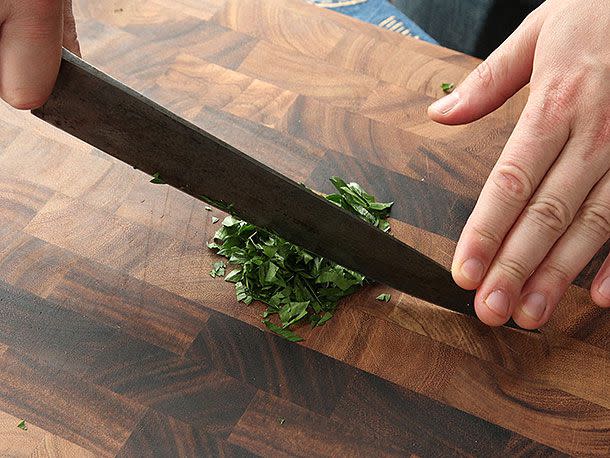
Serious Eats / J. Kenji López-Alt
Rock the knife up and down, re-gathering the ingredients occasionally, until they are as finely minced as you'd like them.
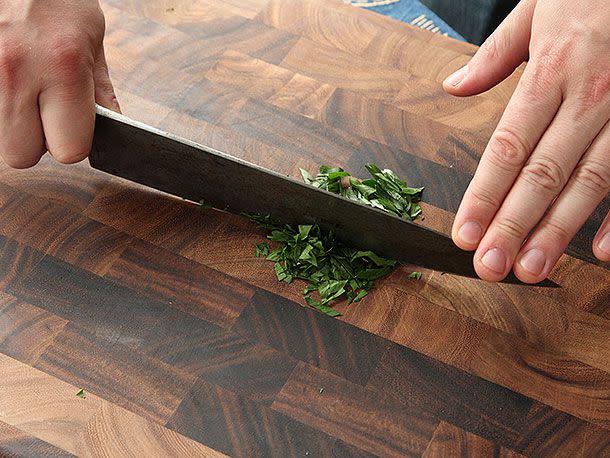
Serious Eats / J. Kenji López-Alt
When gathering your ingredients, remember to always drag your knife blade at a shallow angle to the cutting board—dragging it perfectly perpendicularly will cause it to dull faster than it should!
May 2014
Read the original article on Serious Eats.
